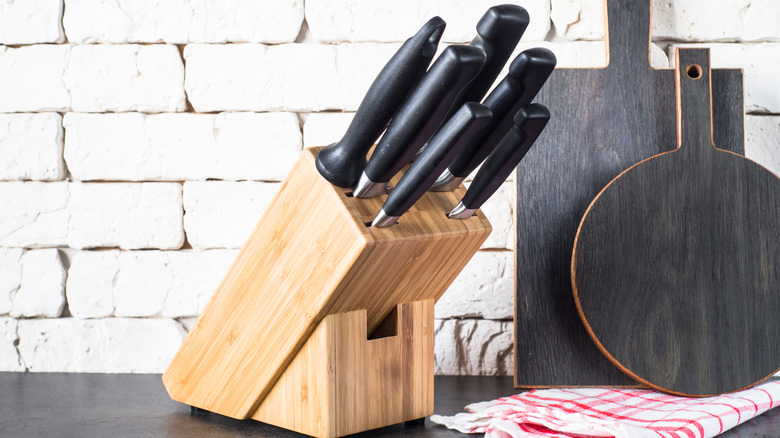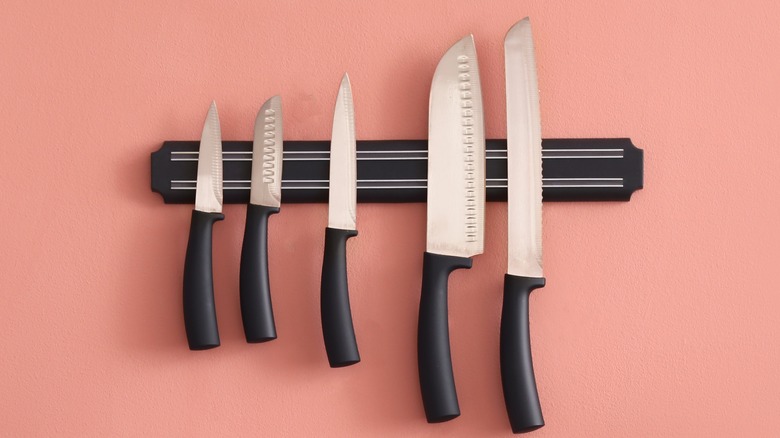How To Clean Your Knife Block
Keeping the kitchen clean is a tough but important job. All of your utensils and appliances should be kept sanitary, and the knife block is no exception. But you can't simply toss it into the dishwasher to disinfect. That's why we've created a guide to teach you how to clean your knife block.
Knife blocks can become riddled with bacteria and mold. A study on household germs found that knife blocks rank seventh on the list of germiest items in the kitchen, according to the National Sanitation Foundation. Knife blocks stored on countertops can be exposed to moisture from a nearby faucet's stray droplets. And placing wet knives into a block can introduce moisture to the knife slots. Since most blocks are made of wood, their porous texture is a viable environment for mold.
If you've never considered cleaning your knife block, think again. Taste of Home recommends cleaning your block once a month if you use your knives daily. However, many chefs and kitchen experts tend to advise against using blocks at all, due to the possible bacteria and mold problems, and, says Thrillist, sliding knives in and out of the slots can damage the utensils. But, if you just can't part with your block, here's how to keep it hygienic.
You'll need a soapy solution and bleach
While scrubbing with soap and water usually will do the trick, a diluted bleach solution can ensure maximum cleanliness — but this will entail a two-day process to make sure that the block has enough time to dry in between.
After removing the knives, America's Test Kitchen advises turning over your knife block to shake out crumbs, then using a pipe cleaner to get into all the nooks and crannies. Using hot water mixed with dish soap, and a sponge, scrub the outside of the block, wiping it down with a damp cloth, followed by a dry cloth. Drying out your block could take a couple of days. You want your knife block to be completely dry before you store knives in it once again.
For particularly dirty blocks, a bleach solution can be used after the block dries from its initial cleaning.
If the block is still moldy following these cleaning processes, House of Knives suggests sanding the block's surface. In place of a block, some alternative storage methods include keeping knives in a breathable knife bag, on magnetic strips, or in individual blade guards — you can even store knives in a vase of uncooked rice.

